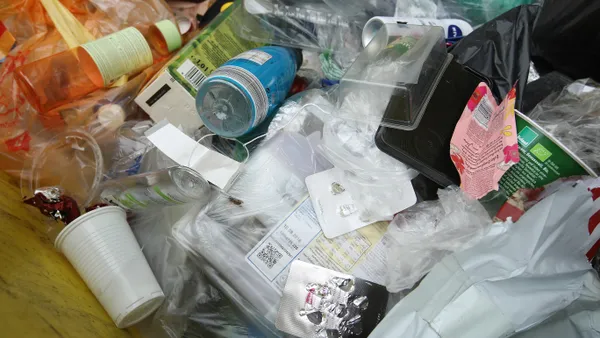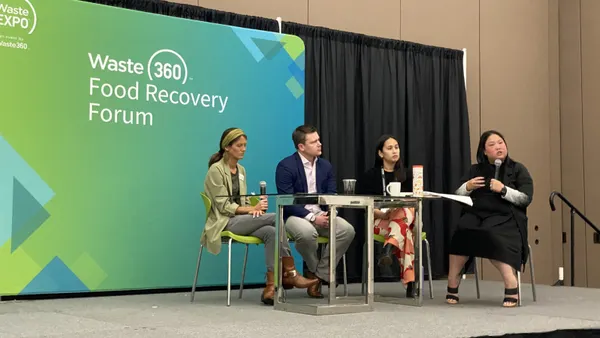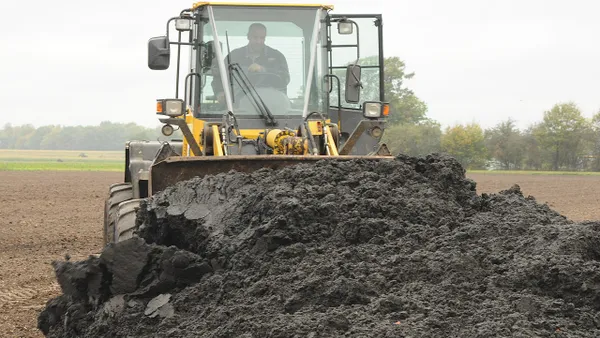Dive Brief:
- The Great Pacific Garbage Patch (GPGP), a rotating gyre of waste and debris located between California and Hawaii, is spread across 1.6 million square kilometers (about 617,700 square miles, or more than twice the area of Texas) and contains at least 79,000 metric tons of plastic, according to new research published in Scientific Reports. These figures are 4-16 times larger than originally thought.
- By far, plastic material makes up most of the litter researchers found in the GPGP, comprising 99.9% of 1,136,145 pieces and 1517 lbs. of trash they collected for the study. Of collected plastics, 47% were hard plastics, sheets and films and 52% were nets, ropes and other lines. The study estimates that the GPGP contains 1.8 trillion pieces of plastic, of which about 1.7 trillion are estimated to be "microplastics," pieces between 0.05cm-0.5 cm.
- From July-September 2015, researchers, including The Ocean Cleanup, conducted a total of 652 surface net tows to collect and analyze marine debris. The study area was also reviewed in 2016 by two flights to capture aerial imagery of larger plastics.
Dive Insight:
The Ocean Cleanup, the driving force behind this study, has attracted millions of dollars in funding for its work in the Pacific. The company first announced its research expedition in July 2015. Since then, it has debuted prototypes of a cleaning mechanism and, more recently, leased space for an assembly yard on the San Francisco Bay to begin construction of its first full system.
While there is some ongoing debate whether cleaning material already in the ocean is worth expending resources that could instead be focused on more mitigation, there is a clear global consensus that marine debris, and marine plastic, is an issue that needs addressing.
The connections to the U.S. industry aren't always obvious, but they do exist. For one, U.S.-based firms like the Closed Loop Partners are heavily involved in funding for cleaning and mitigating marine debris. Others, such as TerraCycle, are part of the push to find new uses for that material.
As companies looking to export recyclables move away from China and toward India, Malaysia, and other Southeastern Asian countries, they will have to take steps to consider what happens to material once it enters those countries. This is especially pertinent because just a handful of rivers in that region are said to contribute 67% of marine debris that comes from inland sources.









